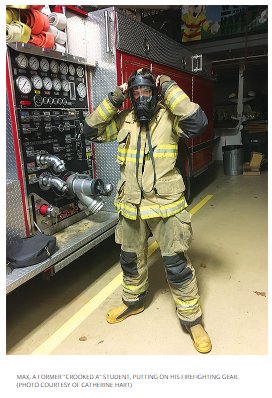My nephew Max (a pseudonym) started skipping school when he was a high school freshman. He did enough to get by, coming home with C's and D's on his report cards, but he continued to skip school no matter what anyone did to try to get him to be a "better" student. He not only skipped classes on a regular basis, he skipped studying. He certainly didn't do his homework. His teachers pushed and prodded, his family begged and scolded. If you ask him now, Max says that to him, school seemed irrelevant.
Max was what Michael Nakkula (2013) calls a "Crooked A" student. These students' paths to good grades aren't the traditional ones, but, Nakkula notes, they "emerge at some point as top performers, although their early histories wouldn't have predicted such outcomes" (p. 1). Most educators know how to teach students who've been high achievers all their lives and for whom traditional school comes easy. But, Nakkula asks, "What about those students who don't possess such academic success, though they have the potential for similar accomplishments under different circumstances?"
Because of his resourcefulness and an innovative program at his high school, Max found his "different circumstances," his own path to academic achievement. What about those students who don't have access to alternative programs that meet their needs? What about teens who aren't as resourceful as Max or who can't, for whatever reason, advocate for themselves? How can educators ensure that every student finds their niche and successfully navigates the high school experience—during years notoriously characterized by decreasing academic engagement and motivation?
Max's story confirms much of what we already know. Students—especially disengaged ones—need relevance and relationships to learn.
How Can We Help Every "Max"?
Max's story, however, also highlights the fact that each student is unique. There are dozens of students in every classroom, hundreds in every grade, thousands in many schools. Establishing relevance for—and relationships with—all students in a classroom can seem daunting, especially for high school teachers, who teach multiple classes and may see more than 100 students a day. Finding and focusing on each student's strengths is a place to start.
Start with Strengths
Help Them Feel Competent
Help Them Feel They Belong
Offer Autonomy
To read more of Catherine Hart's article, Controlled-Burn@-A-Story-of-Growth.aspx" rel="noopener noreferrer" target="_blank">please click here.



Comments (0)